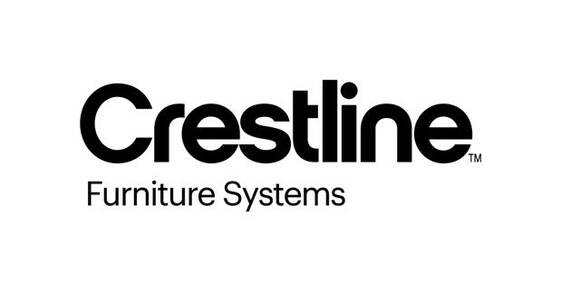Designing workplaces that inspire people to perform their best.
How people-centric design and true choice can make the workplace a destination – one that helps people look forward to Monday morning.
DINZ x Crestline Whitepaper: Wellbeing in the Workplace
Born out of the 2025 Crestline x DINZ Symposium on Workplace Wellbeing, this brilliant doc reflects design expertise and ideas shared.
The event brought together leading voices in architecture and design to explore how workplaces can move beyond function - becoming spaces that support balance, belonging, and inspiration.
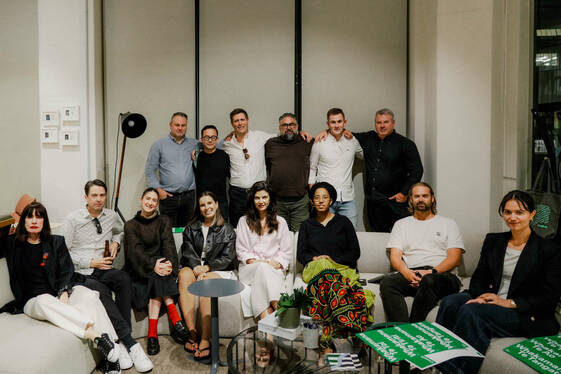
This new paper captures their insights and asks: how can design help us create work environments that people genuinely look forward to returning to?
Contents:
– Balance, flexibility, choice and personalisation
– The role of sensory design: light, texture, greenery, and scent
– Authentic storytelling and cultural connection
– Safety, comfort, and psychological wellbeing
– Future trends in workplace design
Co-ordinated by DINZ and Crestline, and hosted by Crestline Furniture, the panel included:
- Alex Liang, Associate Director and Architect, RCG
- Alix Abanda, Associate and Lighting Lead, Beca
- Arron O'Hagan, Senior Associate, Designer and Technician, Warren and Mahoney
- Cathy Veninga, CEO, Designers Institute
- Erini Compton, Interior Architecture and Design, Sképsi Studio
- Finn Scott, Director and Registered Architect, Bossley Architects Ltd
- Georgia Simpson, Senior Interior Designer, GHD Design
- Harry Rowntree, Managing Director, Unispace
- Hodaya Yarden, Junior Interior Designer, Stack Interiors
- Natasha Baumgartner, Associate Principal, Wingates
- Reagan Suckling, Project Manager, Expedite
- Dean Renton, Director, International Trade/ Product Innovation, Crestline Furniture
- Diego Betanzo, Senior Sales Executive, Crestline Furniture
- Jon Renton, Director, Business Development Manager, Crestline Furniture
- Ryan Renton, Business Development and Sales Manager, Crestline Furniture
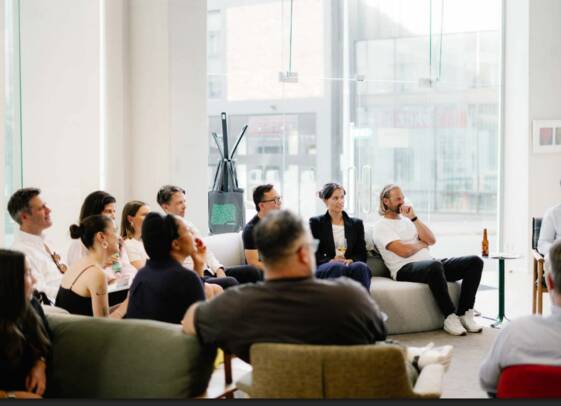
What is workplace wellbeing?
A designer’s role is to improve spaces, and the standard is constantly evolving. Workplaces have grown beyond just a place to get work done.
They’ve become spaces that must inspire, encourage collaboration, and offer flexibility and comfort. With remote work, hybrid models, and a multigenerational workforce reshaping how we work, our panellists emphasised that wellbeing in the workplace is about balance, choice, and creating environments where people feel safe, inspired, and connected.
The power of balance, flexibility, choice and personalisation.
Finding balance between work and home.
It’s something that’s become an increasing challenge, and as a designer and mother, it’s something Georgia knows first-hand. “That balance can be easily tipped,” she said. “The workplace needs to offer flexibility and spaces that reinvigorate you – where you can have thoughtful conversations and feel inspired.”
Hodi agrees, adding, “Wellbeing is about self expression more than anything; a place where I can be myself, whether I’m in a high-powered mode or need a space to slow down and focus.”
The panel believes that workplaces must provide variety to cater to diverse needs. “Choice is everything,” said Harry. “I couldn’t think of anything worse than being stuck at a white desk with terrible lighting. It has to be about choice, culture, fun, and psychological safety – not trying to slot into a fixed idea of what work is.”
Key to achieving environments like this is flexibility and choice – recurring themes discussed throughout the symposium. The design experts shared their experience in creating office spaces that can adapt to employees’ needs, whether that’s a quiet zone for focus, a collaborative area for team catch-ups, or a casual space for social connection. “Flexibility, comfort, and variety in the space allow you to associate with different atmospheres at different times,” explained Finn.
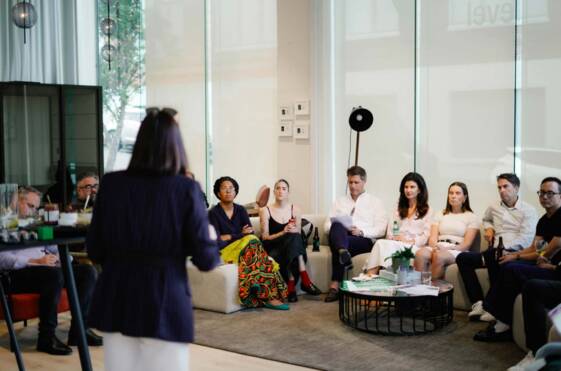
Let workspaces feel personal.
Personalisation also plays a key role in making spaces feel welcoming. “Comfort is important, a space I can relax in and customise, not a dungeon!” shared Alex. Dean added that, because we are seeing a wider range of age groups in the workplace, the design needs to be flexible, adaptable, and encourage face-to-face interaction.”
However, the panel cautioned against trying to make the workplace feel too much like home. The trend of creating ‘home-like’ offices has met with cynicism, with employees feeling it signals an expectation to always be at work. “When I’m at home, I don’t want to see work – I want to be at home,” explains Hodi.
Instead, workplaces should offer something distinct; a space that feels better than home in its ability to inspire and support productivity.
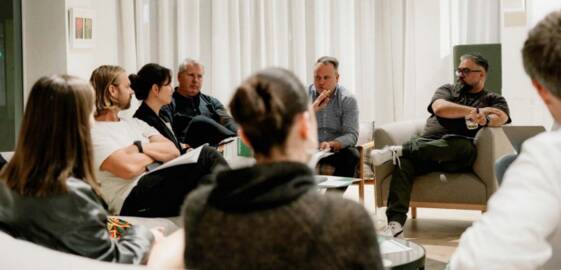
Creating a workplace that benefits its people.
So, how can workspaces be designed to benefit the wellbeing of its workers? The experts recommend avoiding inclusions such as sleep pods, and instead recommend a closer look at the effect sensory elements can have on how people feel in a workplace.
From biophilic design to the use of colour, texture, and even scent, the details matter.
Natasha Baumgartner, Associate Architectural Designer at Wingates, shared the importance of movement and adaptability in design. “It’s not just about comfort — it’s about creating furniture and spaces that encourage micromovement throughout the day, and making sure people have a variety of spaces to choose from. Natural light, greenery, and thoughtful ‘lines of sight’ all play a huge role in how supported people feel at work.”
“People may not know why a space makes them feel good, but they know whether it feels ‘generic’ or ‘thoughtful’,” said Hodi. “It’s like the thinner the glass, the nicer the wine. It’s a subconscious understanding.”
Welcoming the outside in.
The impact nature has on our wellbeing is becoming more understood, and the natural world can be incorporated into the office in many ways. Think natural elements, organic shapes, and access to sunlight.
“In an office all day, you can often forget nature and sunlight. Reconnecting with natural light is key to wellbeing,” said Alix. It’s all about using the natural world to boost mood and productivity – a move away from stark spaces with only artificial overhead lighting.
The benefits can be enjoyed even if it’s an impression of nature, with research suggesting that a simple photograph of a forest on a wall can have the same effect as an actual tree, for example.
Erini says “For a workplace to operate successfully and achieve optimum wellbeing across physical, cultural, and social dimensions, initiatives must be led from the top. Leaders and managers need to consistently demonstrate and promote the changes with the passion they wish to see their staff embrace and carry throughout the workplace."
A sensory and emotional impact.
Similarly, spaces with evidence of human life are also beneficial – something the panel has experienced themselves.
“My favourite place in the office is our leaner where you can see people’s sketches, iterations, and thought process,” shares Hodi. “Things that stand out are thoughtful, handcrafted elements; something that feels authentic, not mass-produced."
This forms part of developing authentic storytelling; something that can be achieved in the design phase with considered material selection and adds to the feeling of a workplace. “There’s been a lot of focus on certifications, but what about the story?” asked Jon. “Authenticity matters.” Arron agrees, noting that Kiwis love a good story: “It’s that number 8 wire thing. If there’s NZ wool, which sheep did it come from? That farm. The best part is when clients start telling their story."
The panel also discussed the potential of scent in design, something that has become a regular inclusion in retail but remains underexplored in workplaces. How could sensory experiences elevate the workplace and drive productivity?
Fostering connection and belonging.
A strong workplace culture is essential for fostering a sense of belonging, and design plays a pivotal role in making this happen. “We are a ‘we’ society,” said Cathy, emphasising the ‘tribal’ nature of human connection.
Thoughtful design choices can reflect a company’s identity and values authentically, helping employees feel part of something bigger. This goes beyond branding and colours, how a space feels influences how the people in that space feel and perform.
Encouraging interaction.
Interestingly, some of the best conversations happen in unexpected places. “The best meetings often happen in the lunchroom, where it’s casual and there’s less pressure,” said Finn. Designing spaces that encourage these informal interactions, such as well-thought-out break areas, can lead to better collaboration and innovation.
Safety and psychological comfort.
Psychological safety is a core aspect of workplace wellbeing; people need to feel secure in expressing themselves and sharing ideas.
“It’s about safety – feeling safe in the space you’re in, whether at home or work,” said Arron. “We have to create a space that’s psychologically safe, culturally safe, and safe to share thoughts with colleagues."
This is especially important for parents and remote/hybrid workers, who often struggle to find a balance between work and home. Unfortunately, the long-term effects of remote work on mental health are still unfolding, as Cathy notes: “The psychology and effects, particularly on people who are remote working, and we won’t see the full impact for years.” It makes designing spaces that support mental and physical wellbeing more critical than ever.
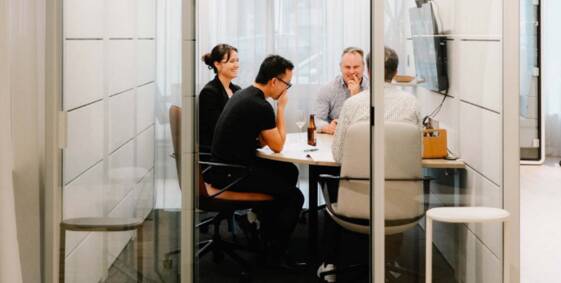
Future considerations for shifting workplace trends.
Looking at emerging trends and future considerations for workplace design, the panel narrowed this down to a focus on balanced, authentic offices that utilise their space.
Looking ahead, Natasha noted that the workplaces that thrive will be the ones that prioritise diversity and adaptability. “We need to provide spaces that enhance and provide a positive experience to those that occupy them considering layout in relation to natural light, integrating planting etc. Technology obviously also needs to keep pace, creating equal experiences for everyone on every level whether they’re in the room or on a screen.”
“The whole move to agile working isn’t so big anymore,” said Harry. “Staff don’t like being moved around too much. It’s more about providing a sense of belonging.” Trends like desk booking are also on the decline.
Instead, there’s a growing focus on reinvigorating underutilised office spaces. “We’re going to see a ‘rising from the ashes’ moment,” said Georgia.
"There’s a lot of dead space in offices; what’s the most amazing thing you can do with it? Companies are looking to invigorate these spaces to retain staff.” Of course, this can be an effective way to attract new talent, too.
Sustainability and authenticity will also need to be carefully considered in the future workplace. Where certification points can sometimes come at the expense of meaningful design, such as “putting carpet in to get points where the space doesn’t need it,” as Arron noted, the focus needs to shift towards authenticity. Switch to using materials with a genuine story, like renewable products or locally sourced New Zealand wool.
You can view and download the Whitepaper HERE.
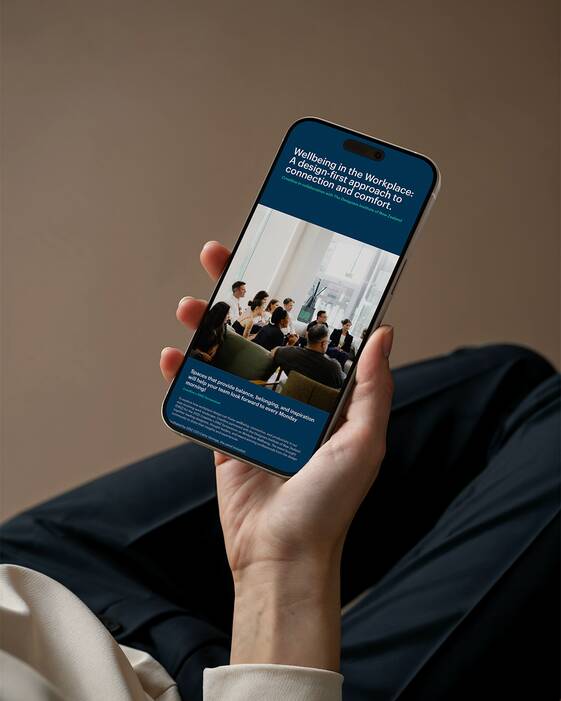
Create a workspace that inspires.
Wellbeing in the workplace goes beyond morning teas and group activities; it’s about crafting spaces that encourage connection, welcome personalisation, and inspire through thoughtful, human-focused design. By prioritising flexibility, sensory experiences, psychological safety, and authentic storytelling, the workplace can be a destination that employees are excited to return to, day after day!
